
21 minute read
THE DOMINANCE OF TRANSPORT THE URBAN EXTENSION SUSTAINABLE DEVELOPMENT
FIVE SOLUTIONS
1. A MANIFESTO FOR RYDE
• The Town Council’s Vision for Ryde is: “ To support and enhance the health, well-being and economy of Ryde to the benefit of residents, local businesses and visitors within a culture that makes best use of our heritage and the beauty of Ryde” • This statement can be developed into a more specific public statement of significance and intent, a Manifesto for Ryde. • The foundations for such a document, taken from local consultations over the past 2 years would include : • Protecting and enhancing free, accessible public space with a special focus on green infrastructure. • Breaking the dominance of traffic in the public realm. • Protecting and celebrating Ryde’s iconic buildings and the skyline and streetscape they compose. • Protecting and celebrating Ryde’s landscape and wildlife. • Creating and sustaining activities and opportunities for young people. • Creating and sustaining opportunities for all, to live and work in Ryde.
THE MANIFESTO PUT INTO ACTION
• Once written and agreed, the manifesto can form the basis for a series of essential partnership agreements with stakeholders who have significant control over or effect upon life in Ryde. It is fundamental to the co-design of services to meet a public intent. • These agreements might be in the form of Memoranda of
Understanding, or Agreement, (MOU, MOA); types of provision that establish an important public statement of cooperation, but do not (at first) constitute a legally enforceable obligation. • The transport estate partnership agreement should be between
RTC and the 5 owners and operators of the transport infrastructure that dominate Ryde seafront: Wightlink, Island Line,
Hovertravel, Southern Vectis and Island Roads (and Isle of Wight
Council) • The regeneration partnership agreement should be between RTC,
IWC (Regeneration and Planning), Ryde Business Association, IW
Chamber of Commerce, The Ryde Society and Ryde Arts CIC as the basis for the resurrection of the Ryde Coastal Community Team. • The health and wellbeing partnership agreement should be between RTC, NHS/CCG (the planned Integrated Care Partnership) and the North-East Locality Hub.
2. A THIRD SECTOR COMPACT
• Ryde Town Council invests £230K annually in the work of local voluntary, community, arts and youth organizations. The capacity of this contribution to build year-on-year public benefits in the civic life of the town is unfulfilled because there is no guiding plan or manifesto that underpins funding decisions. General support for important local organizations, aiding their survival and sustaining their work, is an important objective, but without a framework for ensuring a wider, planned, social and community benefit, the full impact of the town council’s investment cannot be realised. • The networks of public realm project locations proposed, and the 6 zones that connect them, provide a convenient and effective route to cumulative public gains. If a performance organization is asked to deliver some part of its event programme at one or other of the public project sites, for example, or a community advice team a public drop-in, then both the cultural capital of the town’s third sector, and the social capital of its neighbourhoods, are increased. • One approach would be to establish compacts with relevant grant recipients such that there is an agreement that they will contribute an amount of their time and work to building a more coherent shared endeavour. The connection made by RTC between Network Ryde and the management of the skatepark is an example of this approach that could be expanded.
3. A REVIVED COASTAL COMMUNITY TEAM
• Strong local partnerships, federations between public, private and community sectors, are an essential support to the delivery of the sustained positive change to be set out in the Town Council’s manifesto.
Ryde’s great advantages, in the depth and breadth of community engagement in its way of life, have been very recognised, and rewarded, through the successful HSHAZ bid. A collaboration between the town council, the business association, Ryde Arts and the Ryde Society, amongst others, has therefore already been successful. • An independent, democratic structure to support such a partnership is an important step in enabling successful actions to progress and extend. In the case of Ryde, such a vehicle already exists in the form of its Coastal
Community Team, established in 2015 as part of joint working between
Ryde Town Council and the Chamber of Commerce. • Coastal Community Teams across the country have proven to be useful in resourcing local projects and programmes, through the Coastal Revival
Fund, the Coastal Communities Fund, and as a recognised grant recipient for other funds, including Section 106 contributions. • CCTs are fundamentally economic regeneration entities, and so a revival of the Ryde team (which has already published an economic plan) would potentially offer a way forwards for the work of the Ryde Regeneration
Group, as well as establishing a strong local civic partnership to shape better outcomes for the town and its communities, from development proposals, public infrastructure works, NHS and CCG planning, and effective engagement with regional organizations such as the Solent Local
Economic Partnership. 70
4. A NETWORK OF PROJECTS TO ENRICH PUBLIC REALM
• By selecting key public places (such as those raised through recent consultations), small enough individually to be significantly improved, even with modest funds, but together extensive enough to create a coherent network of civic enhancements and each a short walk from the next (300m or less), it is possible to deliver visible positive change across the whole of the priority Town Centre and Seafront domain, extending up through the Monkton Brook corridor to join the urban extension land south and east.
• Public realm enhancements should comprise actions that draw in and concentrate recognisable elements of Ryde’s natural world, history, built heritage and creative ventures in landscape, art, information, orientation, seating/meeting, play, opportunity for event and spectacle and interventions for wildlife.
• Each project provides an opportunity to combine Ryde’s outstanding natural and cultural content through the active participation of, for example: • Ryde Arts CIC and the National Portfolio Organizations. • The Ryde Society and the Historic Ryde Society. • The IW Biosphere, Solent Bird Aware and Natural Enterprise.
A NETWORK OF PROJECTS TO ENRICH PUBLIC REALM
• There are existing and prospective initiatives ready to connect these projects and give them context and extension: • The High Street Heritage Action Zone (HSHAZ) for the High Street (a significant success and great credit to the bidding partnership). • Potential public asset investments: the Town Hall, the Arena, the Harbour area, Appley Tower. • The England Coastal Path, the first National Trail in a decade, running the length of the Esplanade. • The Ryde Local Cycling and Walking Infrastructure Plan (LCWIP) linking Elmfield and Oakfield to the coast through the Monkton Brook corridor. • The South East Hampshire Rapid Transit (SEHRT) bid shared with Portsmouth City Council, proposing improvements to the interchange and its public realm. • The urban extension to Ryde that exists in approved, allocated and proposed residential and employment developments.
1a. Network Ryde 1b. Ryde Library 2. Minghella Square 3. Town Square 4. Ryde Town Hall 5. St. Thomas’ Square 6. Western Gardens ‘Plaza’ 7. The Arena 8. Ryde Skatepark 9. Ryde Harbour 10. Rose Garden 11. Ashley Gardens 12. Eastern Gardens 13. Memorial Gardens 14. North Walk 15. Appley Tower 16. Appley Park 17. Simeon Recreation 18. Monkton Street
Public Project Locations 1
19. The Arc playground and woodland 20. Pig Leg Lane Village Green 21. Nicholson Road community field
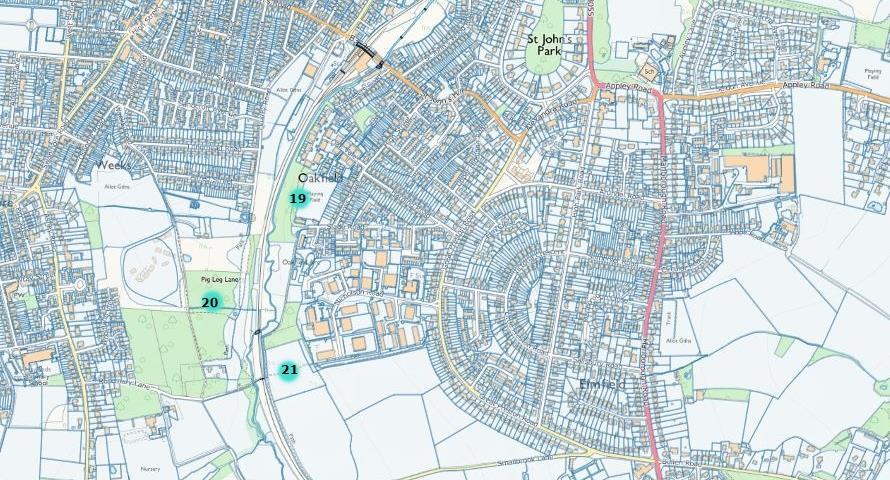
THE PROJECTS FALL NATURALLY INTO ZONES OR ‘NEIGHBOURHOODS’ OF ACTION
• The project network proposed, drawn from key public sites referenced in existing literature and community consultation, can next be grouped according to common themes, identities and actions.
• This ‘neighbourhood’ approach fits well with the economic infrastructure of Ryde, creating opportunities for closer combinations of amenity and enterprise, public assets and livelihood.
• 6 zones have been identified and are indicated and described and explained in the following pages.
• The Esplanade is the largest, and most challenging of the project zones but captures and encapsulates every priority for regeneration and revival that is identified for the town as a whole.
It is therefore truly talismanic in its impact and influence. If the
Esplanade is set to work, to fulfil its potential as high-performance public realm, then the whole town benefits, by direct effect, or by positive precedent.
ST. THOMAS’ ZONE

HIGH STREET ZONE ESPLANADE ZONE
MONKTON VILLAGE ZONE APPLEY ZONE
Project Zone Locations 1
HIGH STREET ZONE
1. Both existing civic centres as well as public spaces. (a) Network Ryde. A centre of youth work and an important public anchor point at the top of the High Street, linking with Ryde Academy in particular. Opportunities to support HSHAZ community and cultural programmes. Opportunity for public investment in property, securing flats above to support key worker, affordable rent, affordable workspace, emergency accommodation support and project income. (b) Ryde Library, home of the Citizens Advice
Bureau and a significant centre of arts and community activity. There is an important opportunity to further invest in the buildings and resources here as part of HSHAZ outreach and engagement, furthering the work of the library in supporting life chances and life quality in Ryde as well as protecting the right to participate in a shared community.
2. Minghella Square. Scope for concentrated public realm enhancement within the ‘dwell time’ enrichment work of HSHAZ.
3. Town Square. High footfall area with important orientation potential through to Ryde Library. Existing markets and events can be supplemented with a calendar of free public events through HSHAZ. Both the cultural and community engagement programmes can play a significant role in this programming. A role of central hub for public space enhancement through the commissioning of public art (from sculpture to decorative detailing and imaginative wayfinding) is possible.

ST. THOMAS’ ZONE
4. Ryde Town Hall and Theatre. An opportunity for public purchase as an investment asset (yellow colour coding is used for all such projects).
The work of the Ryde Empty Buildings Group under the title ‘Creative
Ryde’ has clearly established a justification for public acquisition and regeneration through makerspace and affiliated industries. Ryde Town
Council continues to explore this possibility through lottery funding. A partnership with the IWC commercial property acquisition strategy, or a locally created version of it, provides an alternative, or complementary approach (potentially combining with Historic
England via the HSHAZ work). The importance of active and visible intervention to save, revive and actively and positively utilise Ryde’s critical cultural capital cannot be overstated. The town hall is one of four such opportunities identified in the project network.
5. St. Thomas’ Square. The centre of the town, marking old and new boundaries between upper and lower Ryde, the home of the town council, and a prominent civic space. The cultural programme to be delivered through HSHAZ may offer an opportunity to programme new activity and spectacle and better draw out a coherent space that incorporates the pedestrian crossings the plaza and the town hall area.
ESPLANADE ZONE
6. Western Gardens. This area includes the lower part of Union Street, together creating a third town square or plaza. The essential task here is to connect infrastructure changes to the transport interchange planned by SEHRT with equivalent and simultaneous enhancement to public realm. Improvements to landscaping, seating, signage and orientation to achieve easier, safer and more pleasant pedestrian access between appealing open spaces must be a condition of public investment in the interchange. A new link from Union Street to
Western Gardens across St. Thomas Street would assist in the revival of interest in the Western Sands’ four beaches (accessibility improvements also required), and the development of a key anchor point between town centre and esplanade.
7. Ryde Arena. A visible centre of decay on the seafront and in public ownership. One solution to the protracted and expensive stalemate with the current tenant might be, as with the Town Hall, to buy back the lease as a commercial investment decision. This would provide options for a reworking of the Quay Road public estate to secure rental and car parking income, better use of redundant spaces, restore and expand public amenity, integrate the England Coastal Path and create new and affordable opportunities for local enterprise.

ESPLANADE ZONE
8. Ryde Skatepark. An important resource for in a suitable and accessible location. Its lease expires in 2020. The role of the skatepark, as part of an enhanced recreational space that stretches from Western Gardens to Puckpool, is essential. Its loss, following the closure of the Arena, would further demoralize and disaffect Ryde’s young people. There is an immediate opportunity to integrate the future of the skatepark with the leasehold arrangements for the adjacent harbour, establishing an active centre of sport and leisure activity run by the town, for the town.
9. Ryde Harbour. RTC has taken very positive steps towards establishing and running a community harbour, looking to expand the range of recreational, educational and economic opportunities that the facility can provide. The harbour is one of four bellwether public asset investment projects that together would establish RTC as an ‘Enterprise
Council’.
10. The Rose Garden. A small public space in the flow of people using the
Esplanade and interchange, with great potential to concentrate enrichment for visitors , residents and workers alike. Improvements to seating, planting for wildlife, boundary treatments and the architecture of the space (all easily rose-themed), can be delivered to create a place that is sought out within the seafront public estate.
ESPLANADE ZONE
11. Ashley Gardens. A small but important public space. This wellmaintained and formal garden includes a town pond, a rare feature on the Island. There is scope to make better use of this attraction as waymarking and orientation between the Esplanade and the Monkton
Street neighbourhood. Landscaping for increased ecological value can be incorporated into both the beds and the pond, emphasising Ryde’s status as a coastal nature haven and increasing the possibilities of wildlife encounter for visitors and residents alike.
12. Eastern Gardens. Another in the series of gardens that punctuate Ryde’s seafront. A formal landscaped greenspace with potential for boosted wildlife value (as part of a coastal garden/seafront rewilding effort), public art commissioning, public events, public information and orientation connecting with the England Coastal Path.
13. Memorial Gardens. The same mix of ecological gain (in both planted and built environments), orientation between seafront and hinterland,
England Coastal Path and LCWIP routes to the south, small-scale arts interventions and public information, will help to increase the cumulative impact of the sparse and fragmented green infrastructure that characterises Ryde.
ESPLANADE ZONE
14. North Walk and the Canoe Lake. The lake and its margins are designated as a Site of Importance for nature Conservation (SINC
C214A). There is an opportunity here to emphasise the relict dune ecology and manage the sandy slopes to reduce invasive plant cover and restore a coastal flora. The lake also provides a winter refuge for wildfowl, with a feral population present the year round. By actively managing the site as an urban nature reserve, interpreting its wildlife value, providing information on what to look for and when, increasing and improving coastal habitats and reviving degraded areas, it is possible to combine recreational and conservation functions and to connect this work with the wider narrative of Biosphere that is exemplified by Ryde.
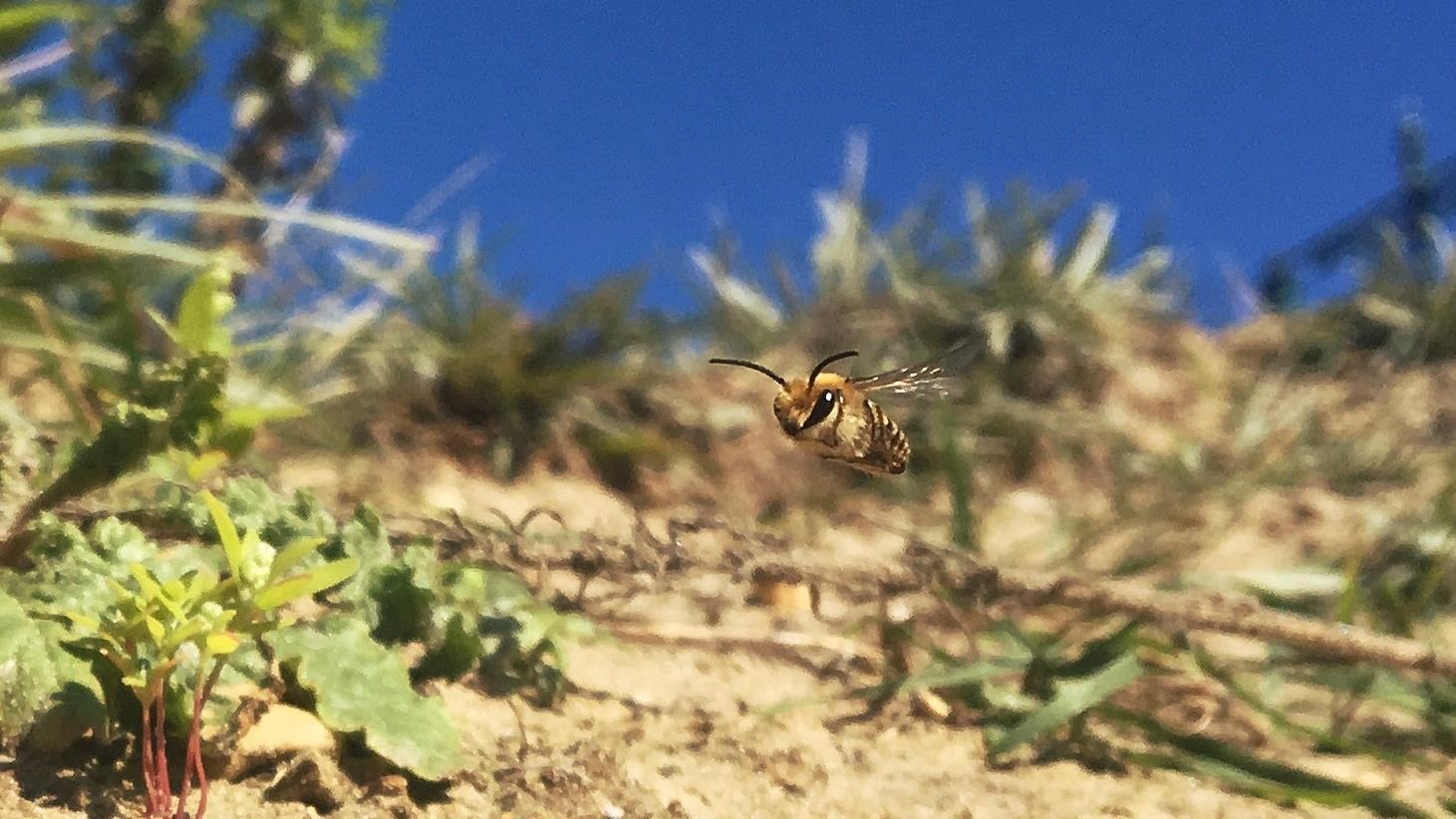
APPLEY ZONE
15. Appley Tower. Work is being undertaken by Natural Enterprise, with support from the Coastal Revival Fund, to assess options for sustainable redevelopment of this Grade II listed building. The potential for its use as a tourism venue, café, bar and restaurant is being developed in more detail. There are important opportunities to incorporate the building ’s
‘observatory’ appeal also, looking out onto the protected habitats of
Ryde Sands, backed by the Repton landscape of Appley Park, a perfect
Biosphere combination.
16. Appley Park. An important public space in itself, with cultural and ecological value for recreation, education and tourism. Appley connects the town’s seafront esplanade with the outposts of Puckpool and
Harcourt. The latter ’s existing development history has embedded a requirement for extensive new public green infrastructure, better connecting Appley and Puckpool. In this way Appley’s influence over
Harcourt’s design creates an essential bridge into the eastern and southern arc of proposed and permitted development, potentially prompting the creation of continuously connected new public realm from Harcourt to Puckpool, Westridge and Smallbrook.
MONKTON VILLAGE ZONE
17. Simeon Street Recreation Ground. A public greenspace significantly and unfavourably altered by recent flood defence works. The Rec is another example of the lack of connection between infrastructure works and the shared life of the community affected. There could, and should, have been investment in the recreational value of the site as part of the agreed programme of public works, but the prompt for this intervention must come from the town itself. This is why a Manifesto for Ryde, and its implementation through strategic agreements with key stakeholders (which would include the Environment Agency and Southern Water given their prominent presence in the life of the town) is required. There is an opportunity to revisit the site and begin to repair damage done to its utility and appeal as a public park. The Rec is an important orientation point between the Esplanade and the Oakvale corridor.
18. Monkton Street. The Monkton Street neighbourhood has a strongly individual character, with its mix of shops, cafes (such as the new
Monkton Arts Café) , small industrial estates and dense streetscape. It connects easily, via Park Road and St. Johns Wood Road, with the Oakvale green corridor to the south (a route also featuring in the town’s draft
Local Cycling and Walking Infrastructure Plan). There is great potential to emphasise the locally distinctive sense of place in and around Monkton
Street, establishing both destination and linking roles within the project network. 87
OAKVALE ZONE

Project Zone Locations 2
OAKVALE ZONE
19. The Arc play area and woodland. These areas are owned and managed by Sovereign Housing Association as part of their Slade Road estate; both the playground and the river valley wood are publicly accessible at all times, from public footpath/bridleway R54 and from
Nicholson Road. A report produced (by Arc Consulting) for Sovereign in 2018, proposed enhancements to the open space and green infrastructure, focussing in particular on the opportunity to create a greater mix of use: “By strengthening the connections
between the Nicholson Road commercial district, the Slade Road/Oakvale neighbourhood, footpath R54, and bringing these connections together around the play area and its surroundings, a strong sense of shared space can be created. This work encourages a diversity of interactions between people of all ages and helps to develop local routines that incorporate The Arc. A greater and more diverse presence can serve to build security and safety (less forbidding, more observers and participants) and help drive behavioural change towards a more optimistic view of the space. It becomes a place worth caring about, less prone to littering, dog-fouling and damage.”
There is a concentration of social housing through this zone, shared between Southern and Sovereign Housing Associations. Both organizations have active community development programmes and should be considered very significant allies of the town council.
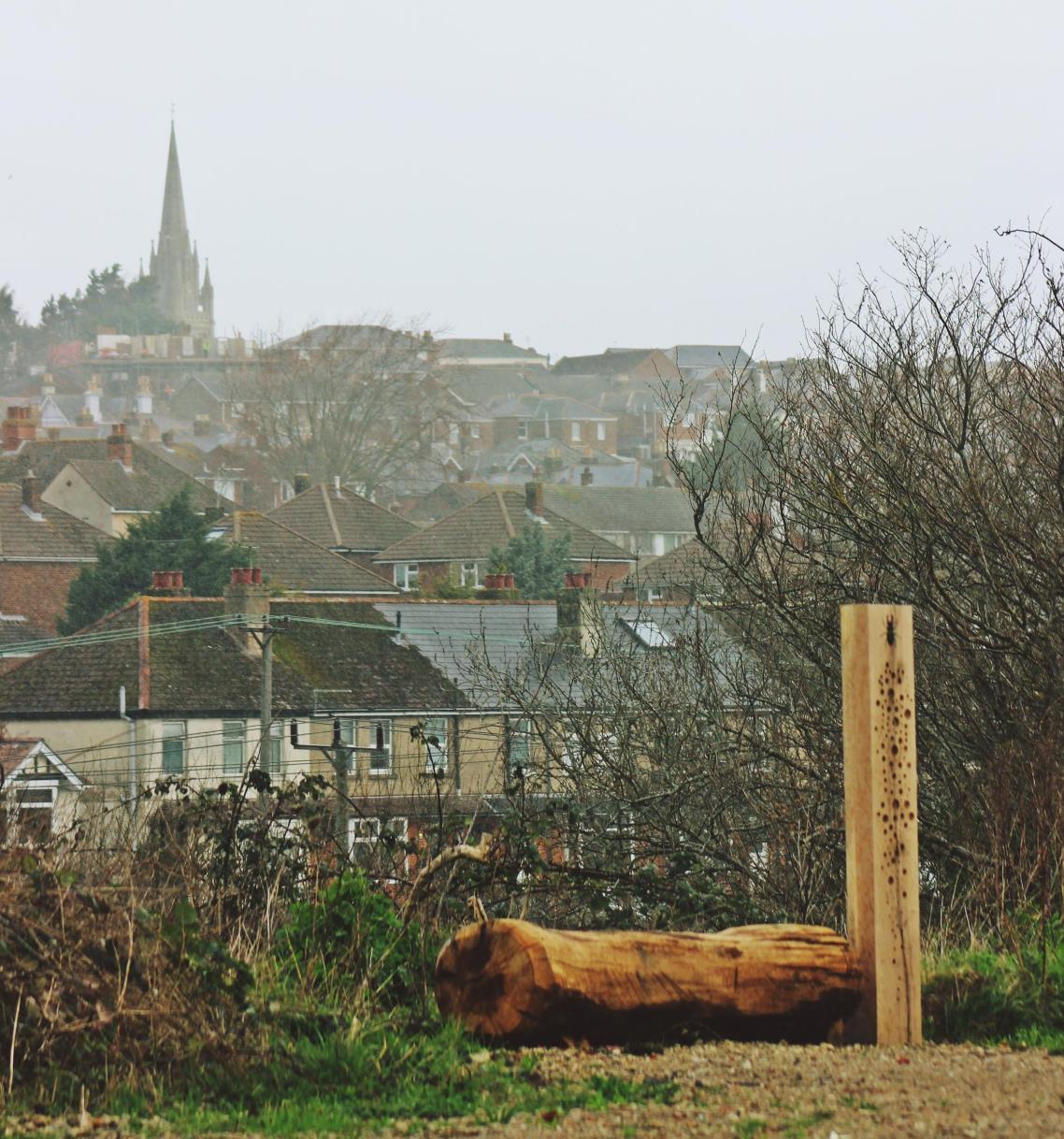
OAKVALE ZONE
20. Pig Leg Lane. One of the Island’s few Village Greens (Swanmore
Meadows) and one of two in Ryde (with Play Lane Millennium Green).
It is also designated as a Site of Importance for Nature Conservation (SINC 213A) and is managed on behalf of Ryde Town Council by the charity Natural Enterprise as part of their Gift To Nature programme.
Pig Leg Lane forms a continuous accessible greenspace of over 14Ha with the Sovereign Arc sites and Nicholson Road’s proposed community space creating one of the largest such areas on the Island, essentially a country park. This combined area sits in the centre of the Ryde urban extension, comprising the redevelopment of the adjacent vineyard,
Pennyfeathers to the south and Nicholson Road to the east. Its significance to ‘Future Ryde’ scenarios is therefore significant.
21. Nicholson Road. This is a priority IWC site in the Island’s Regeneration
Strategy. Much of the site will remain accessible green infrastructure and particular attention is being paid to the northern section to be given over to community facilities. Included in this is the field bisected by footpath R55 which will remain as public open space. The point at which this site meets the Arc woodland to the north and the Swanmore
Village Green to the west is also the junction of six public rights of way, making it a significant landmark and orientation point into ‘Future Ryde’ neighbourhoods. 91
THE ZONED ‘NEIGHBOURHOODS OF ACTION’ ARE CONNECTED AND PROVIDE A BRIDGEHEAD TO THE RYDE URBAN EXTENSION
• The six project zones are all positioned along existing rights of way and pedestrian and cycling routes recommended in the Local
Cycling and Walking Infrastructure Plan (LCWIP) as well as the
England Coastal Path (ECP).
• The Oakvale and Appley zones also form essential connectors into the future urban extension along the south and east of Ryde, comprising permissions and allocations that may be developed.
• A new route is therefore possible between these zones, running through the green infrastructure provision of current and future development schemes if they are delivered. This must be a highquality walking and cycling route that encourages and facilitates the flow of people between zones.
• It is essential that Ryde Town Council and its partners ensure, should developments be approved within this south-east belt, that greenspace and public realm are integrated between them so that maximum permeability is achieved for existing and new communities.
THE ZONED ‘NEIGHBOURHOODS OF ACTION’ ARE CONNECTED AND PROVIDE A BRIDGEHEAD TO THE RYDE URBAN EXTENSION
The creation of flow and movement within and between the zones is fundamental to building social capital in Ryde and is based on three key principles for shaping better places:
• Create a public realm that improves the quantity and diversity of human interactions and everyday meetings and so increases the likelihood of future positive events.
• Combine and connect public spaces to make coherent networks for communal living.
• Build social life by making it easy for shared activity to happen in a public context, encouraging collaboration and participation that adds value to neighbourhoods.
This combination of locally distinct districts and neighbourhoods, with strong individual sense of place, well connected and permeable for pedestrians and cyclists, fostering the meeting of people and the exploration of a wide and varied public realm, must be at the heart of planning for Ryde.
Connecting the Zones
LCWIP routes
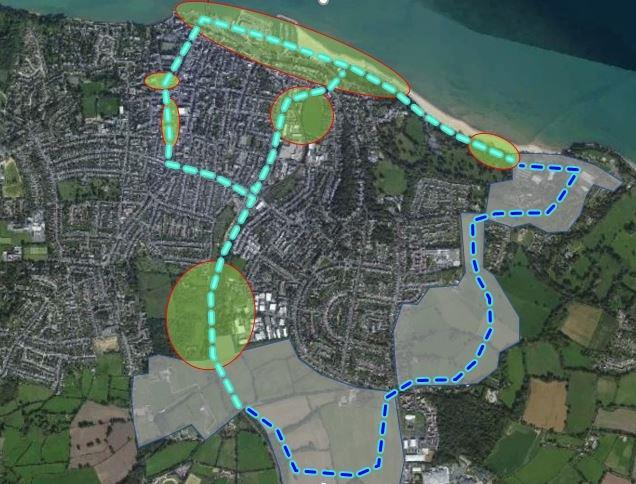
Project Zones LCWIP routes and ECP
Ryde Urban Extension areas
Future connector
5. SOCIAL ENTERPRISE ZONES
• The strongly nucleated nature of Ryde’s economic activity, embedded in pockets amongst densely residential and high-profile visitor areas, lends itself to a social enterprise approach to neighbourhood regeneration and the development of opportunity and livelihood. A network of Social
Enterprise Zones can be envisaged, overlapping with the public realm project zones and connected across the town as it is now and as it may become.
• A Social Enterprise Zone combines an active collaboration and partnership of public, private and voluntary sectors in establishing, supporting and developing business, industry, employment and training. Its objective is to build sustainable economic development, based particularly on the foundation resources of place in its natural and cultural capital, that has a strongly positive effect on the social conditions and wellbeing of its neighbourhood.
SOCIAL ENTERPRISE ZONES
• A Ryde Social Enterprise Zone will look at commercial acquisition and management of affordable workspace by local authorities, productive meanwhile use of redundant property, combinations of funding support including regional LEP, Coastal Communities and related government initiatives, the Public Works Loan Board, local levy ‘bundles’ including s106 infrastructure support, car park revenue and business rate interventions, and the creation of hyperlocal Business Improvement
Districts (BIDs).
• Opportunities for new social investment will be created by the establishment and development of a social enterprise model for Ryde’s neighbourhoods. Organizations and funders such as Triodos, Locality and
Power To Change are likely to take a positive interest in such an approach.
• The UNESCO Biospheres have strong foundations in sustainable economic development. The Social Enterprise and Biosphere Reserve (SEBR)
Network was established in 2013 with the objective of “building sustainable, healthy and equitable societies, economies and thriving human settlements in harmony with the biosphere.” The Island’s new status as a World Biosphere Reserve will give it access to global experience and expertise in this field. 96
HIGH STREET AND ST. THOMAS
SOCIAL ENTERPRISE ZONES
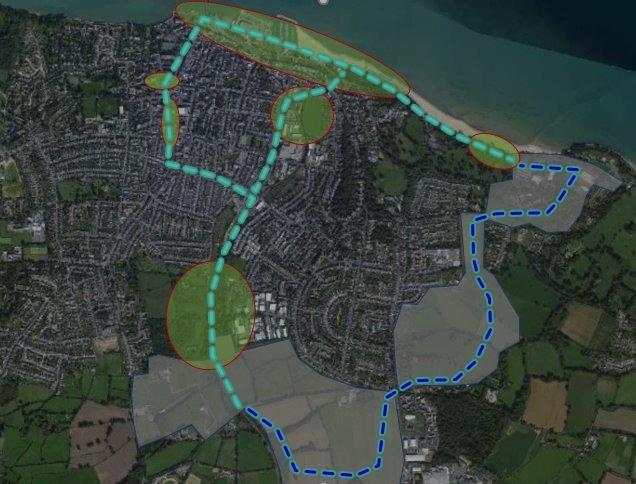
(mapped over public realm projects, future Ryde and connecting routes)
CENTRAL ESPLANADE
RINK ROAD AND MONKTON STREET
NICHOLSON ROAD APPLEY AND PUCKPOOL
WESTRIDGE









